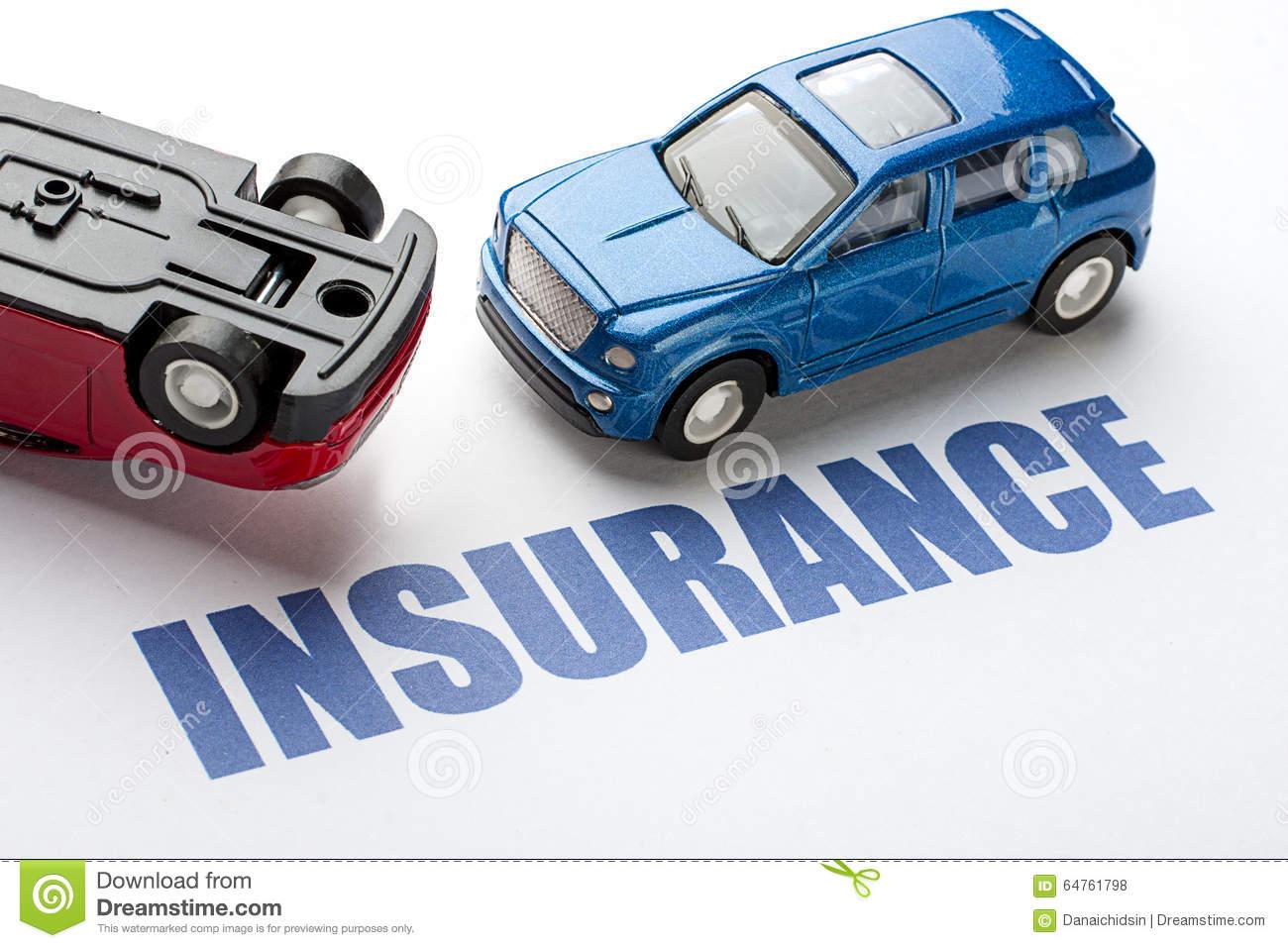The national average rate for full coverage car insurance is $1,682 in 2023, but how much you’ll actually pay depends on where you live — the state you reside in is one of the biggest factors influencing the price of your auto insurance premium.
Florida is the most expensive state for car insurance with average auto premiums of $2,560 per year – which is about 23% increase in rates from 2021, according to an Insure.com analysis. Notably, drivers in no-fault states such as Florida and Michigan pay more for auto insurance than drivers in other states.
On the other hand, Ohio, with average insurance premiums of $1,023 a year, is the state with the cheapest car insurance rates this year.
KEY TAKEAWAYS
- Car insurance rates vary by state.
- The average premium in Ohio is $1,023, almost 40% less than the national average.
- Florida has an average insurance rate of $2,560, making it about 52% more expensive than the national average.
- Several factors influence your car insurance rates such as your driving record, gender, age, location, credit score and the vehicle you drive.
Car insurance rates by state in 2023
The Pelican State, Delaware, Michigan and California followed as the most expensive states in the country for auto insurance. The reason these states come with sky-high premiums varies — everything from unique insurance schemes to high-density populations. Additionally, an increased number of uninsured drivers and costly lawsuits will always push up premiums.
Still, rates in Florida are unmatched — there is a $445 difference between the Golden State and first-place Florida. Florida’s rates are exceptionally high due to weather, as well as a large number of teen, senior and uninsured drivers on the road.
When it comes to low-priced states, Ohio has the cheapest rates in 2023. Maine came in second, followed by Idaho, Vermont and Oregon.
In Ohio, the average premium is $1,023, which is about 40% less than the national average of $1,682. Rates in Ohio are cheaper than the rest of the country because Ohio’s prices aren’t increasing as quickly as other states and more people opt for minimum liability coverage.
| State | Average annual premium |
|---|---|
| Alabama | $1,542 |
| Alaska | $1,359 |
| Arizona | $1,617 |
| Arkansas | $1,597 |
| California | $2,115 |
| Colorado | $1,940 |
| Connecticut | $1,750 |
| Delaware | $2,137 |
| Florida | $2,560 |
| Georgia | $1,647 |
| Hawaii | $1,306 |
| Idaho | $1,121 |
| Illinois | $1,578 |
| Indiana | $1,256 |
| Iowa | $1,321 |
| Kansas | $1,594 |
| Kentucky | $2,105 |
| Louisiana | $2,546 |
| Maine | $1,116 |
| Maryland | $1,640 |
| Massachusetts | $1,538 |
| Michigan | $2,133 |
| Minnesota | $1,493 |
| Mississippi | $1,606 |
| Missouri | $2,104 |
| Montana | $1,692 |
| Nebraska | $2,018 |
| Nevada | $2,023 |
| New Hampshire | $1,307 |
| New Jersey | $1,901 |
| New Mexico | $1,505 |
| New York | $2,020 |
| North Carolina | $1,368 |
| North Dakota | $1,419 |
| Ohio | $1,023 |
| Oklahoma | $1,797 |
| Oregon | $1,244 |
| Pennsylvania | $1,445 |
| Rhode Island | $1,845 |
| South Carolina | $1,894 |
| South Dakota | $1,581 |
| Tennessee | $1,373 |
| Texas | $1,875 |
| Utah | $1,469 |
| Vermont | $1,158 |
| Virginia | $1,321 |
| Washington | $1,371 |
| Washington D.C. | $1,858 |
| West Virginia | $1,610 |
| Wisconsin | $1,499 |
| Wyoming | $1,736 |
Average cost of car insurance by state
The most expensive states for car insurance
When it comes to expensive car insurance, these states top the list. Reasons for high premiums vary but include weather, high-density cities, uninsured drivers, and expensive lawsuits. Here are the most expensive states for car insurance:
| Rank | State | Average annual premium |
|---|---|---|
| 1 | Florida | $ 2,560 |
| 2 | Louisiana | $ 2,546 |
| 3 | Delaware | $ 2,137 |
| 4 | Michigan | $ 2,133 |
| 5 | California | $ 2,115 |
| 6 | Kentucky | $ 2,105 |
| 7 | Missouri | $ 2,104 |
| 8 | Nevada | $ 2,023 |
| 9 | New York | $ 2,020 |
| 10 | Nebraska | $ 2,018 |
#1 Florida: Weather, older and younger drivers and a lot of uninsured drivers
Florida is the most expensive state for car insurance premiums, rocketing to first place in 2023 after hanging in third place for five years in a row. The average premium in the Sunshine State hit $2,560, an eyebrow-raising 23% increase compared to 2021. Situated along the Gulf Coast, Florida continues to be battered by natural disasters like hurricanes.
Uninsured drivers have always been an issue in Florida. According to the III, over 20% of drivers in Florida are out on the road without coverage — which is one of the highest rates in the country. More uninsured drivers always mean higher insurance costs for everyone.
In addition to tons of uninsured drivers, Florida is also packed with older drivers, students — there are dozens of colleges in Florida — as well as plenty of tourists. All of these are considered higher-risk drivers, which leads to accidents, claims, and higher premiums for residents.
Another factor is the weather. Hurricanes and hailstorms can cause major vehicle damage and insurers have to repair or replace those vehicles. Higher weather risks will always lead to higher premiums for everyone, particularly for comprehensive insurance.
#2 Louisiana: Help may be on the way
The Pelican State is no stranger to our list; it has been in the top five nearly every year we’ve done the study and in the top three since 2017.
The average premium in Louisiana is $2,546, about a 10% decrease compared to 2021.
In Louisiana, uninsured and underinsured drivers combined with easy lawsuits are the major factors in pushing up rates. According to the III, it is estimated that 11.7% of drivers in the state are cruising the roads uninsured.
Even when carrying insurance, many drivers only have minimum required coverage levels, which is usually insufficient to cover the damage in anything more than a minor fender bender. According to Louisiana Insurance Commissioner Jim Donelon, almost 40% of drivers carry the absolute minimum coverage levels.
#3 Delaware: Rising prices push up car insurance premiums
The biggest surprise from the list of most expensive states for car insurance premiums this year was Delaware, which jumped to third place. Notably, Delaware dethroned Michigan, the most expensive state for many years until very recently.
While rising inflation and medical costs could be to blame — the cost of healthcare has increased 2% on average for the past few years, which drives up insurance premiums. Inflation has also increased the cost of repairs for vehicles. Meanwhile, the small state has a high population density, which statistically leads to more collisions.
Like Florida and Louisiana, Delaware also has a large coastline and is increasingly subject to severe weather like tropical cyclones and strong winter weather.
A potential law under consideration could impact on Delaware insurance premiums in the future – the state senate recently passed a bill that prohibits insurance companies from considering a driver’s sex, gender, or gender identity in pricing car insurance. If passed, this might bring down rates for some people but could potentially raise rates for most drivers.
QuickTake
The cheapest states for car insurance
While car insurance rates are increasing across the country, residents in some states still get to enjoy affordable prices — for now. Residents of Ohio, Maine and Idaho see the cheapest rates across the country.
| Rank | State | Average annual premium |
|---|---|---|
| 1 | Ohio | $1,023 |
| 2 | Maine | $1,116 |
| 3 | Idaho | $1,121 |
| 4 | Vermont | $1,158 |
| 5 | Oregon | $1,244 |
| 6 | Indiana | $1,256 |
| 7 | Hawaii | $1,306 |
| 8 | New Hampshire | $1,307 |
| 9 | Iowa | $1,321 |
| 10 | Virginia | $1,321 |
#1 Ohio: Cheap minimum coverage
Ohio becoming the cheapest state for car insurance was another surprise in the 2023 report because the Buckeye state shares such a large border with Michigan, always one of the most expensive states for car insurance.
However, the average annual premium for Ohio drivers increased by 3% to $1,023. Amongst the cheaper states for car insurance, it appears rates are just increasing much more slowly in Ohio than elsewhere. Car insurance in Ohio is about 40% cheaper than the national average.
While car insurance is required in Ohio, many opt for minimum liability insurance, which is extremely inexpensive but doesn’t cover drivers or their vehicles in an at-fault accident situation. Full coverage car insurance is a much better solution.
#2 Maine: Rural, low uninsured rate, competitive market
Maine moved to second after it stood as the cheapest state for car insurance for 3 years in a row. The average premium in the Pine Tree State spiked 30% this year to $1,116. Still, this is about 34% less than the national average.
The car insurance situation in Maine is pretty much the same as last year.
“Maine’s historically low auto insurance losses have helped to keep premiums low, as has the state’s competitive auto insurance market,” says Judi Watters, consumer outreach specialist with the Maine Bureau of Insurance.
Low density and plenty of insured drivers help drive low insurance rates. Maine ranks 38th for population density, leading to fewer accidents and claims when compared to our most expensive states.
According to the III, only about 5% of the drivers in Maine are uninsured. With fewer uninsured drivers on the road, rates are lower for everyone.
#3 Idaho: Rural, low population density
Like Maine, Idaho is rural and has very few urban areas. In terms of average car insurance premiums, Idaho drivers only spend a few bucks more than Mainers every year. The average cost of Idaho premiums was $1,121 in 2022, a 14% increase from the year before.
Idaho, like Ohio, also has a low average because drivers can opt for very minimal coverage at a very low rate. Again, minimum liability insurance means drivers don’t have coverage if they are in an at-fault collision. Additionally, Idaho does not require drivers to have uninsured motorist protection — they can have an agreement with their insurers that they don’t want coverage if they get in a collision with an uninsured driver who is at fault.
This low bar for minimum coverage makes average insurance premiums very low in Idaho, but it might not be the wisest to go with the minimum possibilities. If you get into a collision with an uninsured driver or find yourself at fault for an accident, you’ll probably wish you had more comprehensive coverage.
Fortunately, though, the low cost of minimum coverage drives down the cost of more comprehensive coverage in Idaho.
How much is car insurance in your state or city
Compare car insurance rates by state and learn about how car insurance works in your area. Select your state or city from the below list to get an estimate of car insurance cost.
State-specific factors that impact rates
A variety of factors impact your car insurance rates. In addition to your driver profile, state-specific issues will also affect your rates. While the state (as well as the city, and even the neighborhood) you live in impacts your insurance rates, your driver profile will impact rates as well.
Below are some of the factors insurance companies consider. But note that while some risk factors are under your control, others fall beyond your sphere of influence.
Driving record: Your driving record, which, obviously, is under your control, has a huge impact on rates. Tickets, accidents, and claims will always increase rates. If you have multiple tickets over a short period, you will pay more for coverage or even be denied a policy. Drive safely and stay ticket-free out on the road for the best rates.
Gender and age: These two factors are out of your control, but they can have a big impact on how much you pay. Teen drivers pay the highest premium of all drivers because statistics show that young drivers are involved in more accidents and file more claims than experienced drivers. Meanwhile, teen males are hit with a double whammy; their young age and gender push their rates up dramatically. Studies show that males are more likely to drive more recklessly, leading to tickets, accidents and claims, so men are generally charged more than women.
Location: It’s not just the state you live in that can raise or lower your insurance rates. Insurers will look at neighborhood data as well. High crime or claim rates will result in a higher premium. Weather is also considered and if you park your vehicle in a garage at night your rate could be lower than if you leave it on the street.
Credit score: Depending on the laws in your state, insurers consider your credit score. This is actually a major rating factor for many insurers. Currently, California, Hawaii, Maryland, Massachusetts, Michigan, Oregon, and Utah prohibit insurers from considering your credit score. Insurers use this information because statistical evidence shows a strong link between low credit scores and a high likelihood of making a claim.
The vehicle you drive: The car you drive impacts your insurance premium. A minivan will always be cheaper to insure than a luxury vehicle loaded with luxury appointments and a giant engine under the hood.
“Sports cars and high-end luxury vehicles are almost always much more expensive to insure because of repair costs. The finishes in these vehicles are usually high-end and much pricier than the materials used in more moderately priced vehicles,” says Carole Walker, executive director with the Rocky Mountain Insurance Information Association.
Weather: States that are prone to severe weather will usually have higher insurance costs. Hail, flooding and even wind can do serious damage to a vehicle, and your insurer will charge more for this because it’s on the hook to repair or replace it. If you live in a state where storms are frequent – Florida, Oklahoma and Texas are great examples – insurance companies will charge more.
Insurance laws: Each state sets its own insurance requirements and regulations, and both can impact rates in the state. Michigan uses a unique no-fault system that has resulted in sky-high rates for years. Recent changes to their system are responsible for their drop to fourth place this year.
State-required insurance minimums can also raise or lower insurance costs. States that require more coverages, such as personal injury protection that Michigan requires, end up costing drivers more.
Whether or not you are insured: Uninsured drivers raise rates for everyone as insurance companies tend to pass the cost of uninsured drivers onto insured drivers. States with high rates of uninsured drivers will often have higher insurance costs than states where most drivers are insured.
For example, Florida, the most expensive state for car insurance, has an estimated uninsured driver rate of over 20% as of 2019, according to the Insurance Information Institute (III).
State statistics: Insurers love breaking down statistics, and most take a very close look at the claim, crash and crime rates in your state and neighborhood. Urban areas are usually more expensive as many drivers packed into a small space leads to more auto accidents, which leads to more claims.
Insurers also consider the claim rates of the vehicle you are driving. This means that if your car is a favorite of car thieves or ends up in more crashes, you will pay more for car insurance regardless of whether you’ve ever made a claim.
Read more:
How to get the best car insurance rates
Rates vary widely among companies for the same coverage. You can find free quotes online or by working with an auto insurance agent. Below are the steps to find the best car insurance rates:
1. Gather the required information
There are a few things that need to come in handy before starting to shop for car insurance quotes. They are:
- The basic information about the drivers in the household such as their birthdates, occupation, and license numbers.
- Vehicle information including the make and model of the car, VIN (Vehicle Identification Number) and mileage
- Driving history
- Average miles driven per year
- Current coverage if you have any
2. Decide on the level of coverage required
Next, select the level of coverage you need. Unless you live in New Hampshire, your state needs a minimal amount of bodily injury and property damage liability insurance. This covers the costs of other drivers’ damage. Your state may also demand medical coverage or underinsured/uninsured motorist insurance.
Getting your state’s minimum liability requirements is the cheapest alternative, but it may not be high enough to cover major incidents. It also does not compensate you if you cause an accident. It is advised to have higher coverage as it provides more protection, even though it is a higher cost.
3. Shop for car insurance quotes
The next step is to shop around for car insurance quotes. There are several ways to shop around for car insurance rates like – by using a quote comparison tool, finding quotes directly online, or lastly from a car insurance broker as they can provide quotes from multiple companies. We recommend comparing quotes from at least three companies.
4. Purchase the car insurance policy
After comparing the quotes and understanding which car insurance fits your requirements the best, you can make the final decision about purchasing the car insurance policy.
How are car insurance rates determined?
Understanding the numerous factors that influence car insurance rates might help you get the greatest deals. Here are some factors that influence your auto insurance premiums.
- Driving record: A driver’s rating factor is one of the most essential elements to determine rates. Accidents, claims, and tickets will always boost your premiums. For the greatest rates, drive safely and avoid getting caught with a ticket.
- Gender and Age: The age and gender of the driver also contribute to calculating the insurance rates. Teen drivers have higher rates, as they are considered to have higher chances of getting into an accident and are likely to file a claim.
- Location: It is not just the state where you reside that might affect your insurance rates. Insurers will also evaluate local data. Increased crime or claim frequencies will result in higher premiums. Weather is also considered, and if you park your car in a garage at night, your rate may be lower.
- Credit score: Insurers pay close attention to your credit score. It is a big component of many insurers’ scores. Currently, insurance companies are not permitted to consider your credit score in the following states: California, Hawaii, Maryland, Massachusetts, Michigan, Oregon, and Utah.
- The type of vehicle you drive: The car you drive will have an impact on your insurance premium, as it always has.
Why do car insurance costs vary by state?
Car insurance varies by state for a few reasons. One is that each state has its own insurance laws. These laws mandate the minimum car insurance coverages and limits a car owner must carry on their vehicle. If your state requires higher limits or certain types of coverages, rates can be higher. Additionally, not all rating factors are legal in all states. For example, some states can rate you based on your credit score, while others cannot.
However, our study tried to make it more of an apples-to-apples comparison by looking at the same amount of coverage of liability in each state (100/300/50), having uninsured motorist coverage of 100/300 plus comprehensive and collision coverage.
This demonstrates other factors that push rates higher, such as PIP requirements in Michigan and Florida or Louisiana’s high claims-to-litigation ratio.
Finally, if you live in an area where there are more severe weather events there are more claims, which drive up car insurance costs for all drivers in your state
How to save money on auto insurance rates in any state
You cannot always control every factor that affects your car insurance rates, but there are things you may do to save money. Keeping car insurance rates low by improving your driving habits and credit score, seeking discounts and utilizing usage-based insurance (pay per mile) are all options.
- Improve your driving habits: Avoiding speeding tickets and at-fault accidents will save you money in the long term. With most major insurance carriers, you may join a usage-based safe driving program.
- Increase your credit score: You will get lower auto insurance premiums if you show that you are financially responsible.
- Bundle your car insurance and look for available discounts: You may save money by insuring multiple vehicles or combining home and auto insurance with most carriers. Many companies also provide policy discounts for things like being a new driver, getting high grades as a student, completing a defensive driving course and maintaining a clean driving record.
- Opt for pay-per-mile insurance: Your driving history is factored into your car insurance rates. If you do not drive much, opt for pay-per-mile insurance coverage. Here you pay a monthly base rate plus a per-mile fee.
Choosing any of these above-mentioned hacks can help you save some money on your insurance premiums.
Methodology
Insure.com commissioned Quadrant Information Services to calculate auto insurance rates for 2022 from seven large carriers (Allstate, AmTrust, Farmers, Geico, Nationwide, Progressive and State Farm) in 29,162 U.S. cities and 34,523 Zip codes.
Rates are based on full coverage for a single, 40-year-old male who commutes 12 miles to work each day, with policy limits of 100/300/50 ($100,000 for injury liability for one person, $300,000 for all injuries and $50,000 for property damage in an accident) and a $500 deductible on collision and comprehensive coverage. The hypothetical driver has a clean record and good credit. The rate includes uninsured motorist coverage. Actual rates will depend on individual driver factors.
We averaged rates in each state for the cheapest-to-insure 2022 model-year versions of America’s 20 best-selling vehicles and ranked each state by that average. Rates are for comparative purposes only within the same model year for over 2,500 models.
This apples-to-apples comparison is different than other research, such as the rate comparison conducted by the National Association of Insurance Commissioners (NAIC). The NAIC’s numbers display the average amount that state residents spend for auto insurance, regardless of the type of car they insure or the amount of coverage they purchase.











